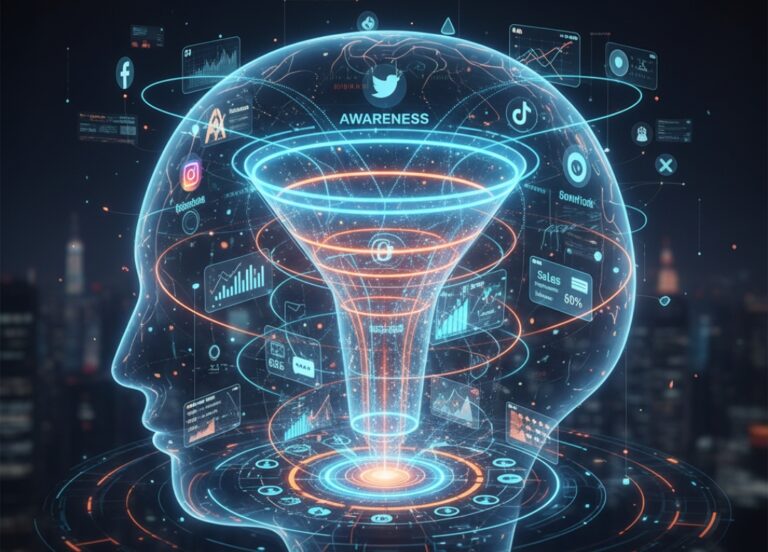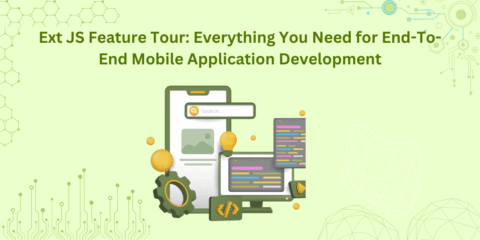Staying ahead in digital marketing used to mean having a great product, a clean website, and some decent ads running on social media. But in 2025, that’s no longer enough. Audiences are more distracted, competition is fiercer, and buyers jump across multiple platforms before making a single decision. In this new landscape, brands need a smarter and more structured way to guide people from curiosity to conversion—and that’s exactly where full-funnel social advertising comes in.
Think of it like meeting someone for the first time. You don’t ask for a lifelong commitment in the first conversation. You get to know each other, build trust, and slowly move toward something meaningful. Full-funnel social ads follow the same relationship-building process, but for businesses.
In this guide, we’ll break down how these strategies help brands grow more intelligently in 2025, using practical examples from different industries and everyday situations.
Understanding the Customer Journey in 2025
Over the past decade, shopping habits have undergone a dramatic shift. People no longer discover a brand and buy instantly. Instead, they experience several touchpoints along the way. This journey is commonly broken down into three simple stages:
- Top of the Funnel (Awareness) – People who don’t know you exist yet
- Middle of the Funnel (Consideration) – People comparing you with competitors
- Bottom of the Funnel (Conversion) – People ready to purchase
But in 2025, there’s also a fourth, equally important stage: Retention. Brands are learning that keeping customers is just as valuable as finding them.
A full-funnel approach targets each stage of the marketing funnel differently.
For example:
- A fitness apparel brand might use short videos to introduce new audiences to its breathable, eco-friendly fabrics.
- Then they’ll retarget viewers with customer testimonials or product comparison clips.
- Finally, they’ll show product demos or limited-time offers to those who added something to their cart.
This creates a smooth, natural progression—similar to how shoppers browse through a store, ask questions, and eventually make a purchase.
Why Full-Funnel Strategies Work Better Than One-Off Ads
Running a single ad to everybody is like speaking to an entire crowd with the same message—half will tune out because it doesn’t relate to where they are in their decision-making.
A full-funnel strategy is more effective because it addresses people based on their existing interests.
Here’s why it’s powerful:
1. You’re meeting customers where they are
Someone who has never heard of a brand needs a story, not a hard sell.
Someone who has added an item to their cart needs reassurance, not more explanations.
This makes your message feel natural and relevant.
2. You reduce wasted ad spend
Without segmentation, brands often pay for impressions that never lead to action.
A structured funnel helps identify which ads create momentum at each stage, so budgets go to the right people at the right time.
3. You build trust more effectively
Trust takes time. That’s true in friendships, partnerships, and even shopping. By showing useful content across the funnel—like how-to videos, customer stories, or behind-the-scenes clips—you’re building familiarity before asking for a sale.
This is also where authoritative resources, such as consumer behavior research, become valuable. When you understand how people make decisions, your messaging becomes much stronger.
4. You prepare for platform changes
Algorithms evolve constantly. Social apps rise and fall. Privacy rules shift.
Full-funnel systems adapt easily because they’re based on consumer psychology, not just platform hacks.
How Brands Use Full-Funnel Social Ads in Real Life
Full-funnel advertising is not just a buzzword—it’s something businesses use daily, from small local shops to global companies.
Here are real-world examples from various sectors:
Retail
A skincare brand launches a new vitamin C serum.
- Awareness: a video explaining the benefits of brightening ingredients
- Consideration: before-and-after photos from real users
- Conversion: a carousel showing product bundles with limited-time discounts
- Retention: “How to build your morning routine” content to prevent churn
Food & Beverage
A café introducing a specialty drink.
- Awareness: aesthetic reels showing how the drink is made
- Consideration: posts featuring customers enjoying it
- Conversion: “Buy 2 drinks, get 1 free this weekend” ad
- Retention: a loyalty program announcement
Professional Services
A mortgage broker is promoting a free consultation.
- Awareness: educational content about interest rate trends
- Consideration: testimonials from recent homebuyers
- Conversion: a simple booking form linked to the ad
- Retention: tips on refinancing or improving credit scores
Across every example, what stands out is the consistency: one message leads naturally to the next, forming a clear path from discovery to decision.
How Full-Funnel Social Ad Services Support Brand Growth
By now, you can probably see why these strategies matter. But what does it look like when a professional team manages the full process?
This is where full-funnel social ad services for brands come into play. Instead of juggling creative, targeting, audience segmentation, ad frequency, and performance testing on your own, these services streamline the entire process. They help brands:
- build the funnel structure
- Create content tailored to each stage
- track performance using real-time insights
- Identify which audiences respond best
- refine ad messaging continuously
- Scale budgets only when results support it
It’s similar to having a dedicated team of strategists, creatives, and analysts working behind the scenes—ensuring every ad is part of a bigger strategy, not a random piece of content floating in someone’s feed.
This approach becomes even more valuable in 2025, when the competition for attention is tighter across all major platforms.
The Future of Social Advertising: Smarter, Not Louder
Brands often assume that success comes from shouting louder—posting more, boosting every post, and running a dozen campaigns at once. But that’s not what customers want.
People want clarity. They want stories. They want relevance.
Full-funnel strategies help deliver all three.
Here’s what the future looks like for brands that adopt this model:
Better audience loyalty
Customers feel understood. Your message matches their mindset.
Higher quality leads
You’re not casting a wide net—you’re guiding people down a path intentionally.
More efficient ad spend
You see which stage of the funnel drives the strongest return, then adjust accordingly.
Longer customer relationships
Retention becomes part of the plan, not an afterthought.
Think of it as the evolution of social media marketing—not a flashy trend, but a framework that makes growth sustainable.
Final Thoughts
As we move further into 2025, the brands that succeed won’t be the ones spending the most—it will be the ones spending the smartest. Full-funnel social advertising offers a clear blueprint for doing exactly that.
It helps businesses understand their audience, create relevant content at every touchpoint, and develop deeper relationships that lead to real, long-term growth.
Whether you’re launching a startup, expanding an online store, or scaling an established company, adopting this structured approach can transform your marketing efforts into something far more powerful: a system that works 24/7 to attract, nurture, and convert your ideal customers.





